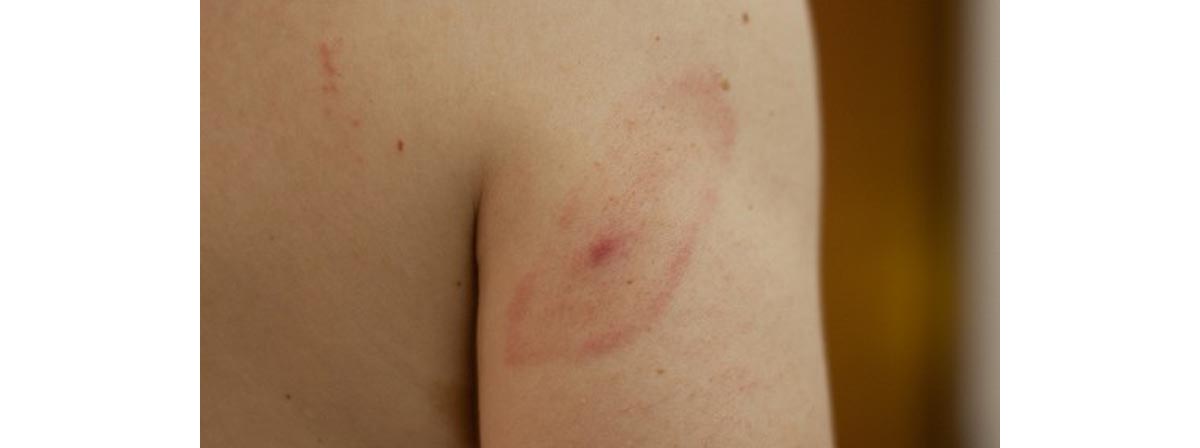Table of Contents
Lyme Disease shows up as a multi-system inflammatory disease. It has three stages, which each have distinctive symptoms:

-
During stage 1, the infected person may notice a characteristic “bull's eye rash”.
This red rash has a center, surrounded by a larger ring-shaped rash. It usually shows up within a week or two after infection. Flu-like symptoms including stiff joints, muscle and throat aches, swollen lymph nodes and fatigue are also likely to show up during this stage of the disease.
-
Stage 2 is more serious.
Symptoms of stage 2 Lyme Disease include muscle pain, swollen knees and other large joints, and a serious inflammation of the skin around the victim's hands and feet. Weak or paralyzed facial muscles, heart palpitations, fever and disorientation are other symptoms.
-
Stage 3 Lyme Disease can take months or years to set in.
Arthritis of some large joints, numb extremities, and neurological disorders mark this stage of the disease. Expect severe headaches, loss of concentration, memory loss, vision changes, confusion and similar nasty symptoms.
If you think you have Lyme Disease symptoms, you should get in touch with your doctor immediately, even if you are not aware of any tick bites. Pay particular attention to the erythema migrans or “bull's eye” rash, which occurs in the vast majority of infected people — usually, but not always, at the site of the original tick bite. The erythema migrans rash is called a bull's eye rash for a reason, and the migrans part of the name refers to the fact that this is an expanding rash.
See your doctor even if you don't have the bull's eye rash but you do have other symptoms, especially if you live in an endemic area and are an outdoorsy person. If you ignore of fail to recognize early symptoms of Lyme Disease, you could develop more severe symptoms and the disease will be harder to treat.
Diagnosis And Treatment
Lyme Disease is therefore diagnosed on the basis of symptoms, and the bull's eye rash in particular. If you know you have been bitten by a tick and are manifesting symptoms, take action immediately, whether or not you have a rash.
Of course, there are cases in which early symptoms went unnoticed and were attributed to other causes like flu or stress. Later symptoms can appear weeks, months, and even years after initial infection in those cases, and the Centers for Disease Control and Prevention (CDC) recommends the use of ELISA and Western-blot blood tests in that situation.
This test is done through a spinal tap or by removing synovial fluid from an affected joint, and is designed to detect the bacterium's presence.
Late-stage Lyme Disease requires more complex treatment
Oral or IV antibiotics are part of the treatment plan, but other steps may need to be taken depending on the neurological problems and joint complaints a patient experiences. Late-stage Lyme Disease patients may continue to have problems for a long time, and the effects of the disease can even be permanent.
- Photo courtesy of John Tann by Flickr : www.flickr.com/photos/31031835@N08/6368338667/
- Photo courtesy of Stefan Kellner by Flickr : www.flickr.com/photos/skellner/3687318381/
- Photo courtesy of Tom by Picasa : lh6.googleusercontent.com/-A5cs_uEzEk4/TIkRKHqMMLI/AAAAAAAALrI/CW3b2qT9qdM/s1024/P1040593.JPG


Your thoughts on this